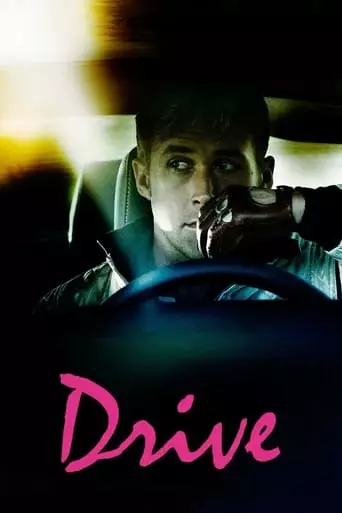Driver is a skilled Hollywood stuntman who moonlights as a getaway driver for criminals. Though he projects an icy exterior, lately he’s been warming up to a pretty neighbor named Irene and her young son, Benicio. When Irene’s husband gets out of jail, he enlists Driver’s help in a million-dollar heist. The job goes horribly wrong, and Driver must risk his life to protect Irene and Benicio from the vengeful masterminds behind the robbery.
Drive (2011), directed by Nicolas Winding Refn, follows the life of an unnamed protagonist, known simply as “The Driver” (Ryan Gosling). He works as a mechanic by day and as a getaway driver by night. The film takes place in Los Angeles, where the Driver becomes entangled in a dangerous underworld of crime and betrayal after forming a connection with his neighbor, Irene (Carey Mulligan), and her young son, Benicio.
The Driver’s life takes a turn when Irene’s husband, Standard (Oscar Isaac), is released from prison. He is soon threatened by gangsters to pay off a debt he incurred while in prison. To protect Irene and Benicio, the Driver agrees to help Standard in a heist to rob a pawn shop. However, the heist goes wrong. Standard is killed, and the Driver ends up on the run with a bag containing $1 million, which he discovers was part of a setup. As he unravels the conspiracy, the Driver must confront various dangerous individuals, including mobsters Bernie Rose (Albert Brooks) and Nino (Ron Perlman), who are involved in the heist.
The Driver’s quest to protect Irene and her son leads to violent confrontations, and ultimately, a final showdown where the Driver seeks revenge for the betrayals he has faced. The film concludes with the Driver severing ties with Irene, leaving her and her son to live a safer life, while he drives off into the night, severely wounded.
Analysis of Themes and Impact
Drive explores several profound themes that resonate deeply with viewers:
- Isolation and Identity: The Driver is a deeply solitary character, whose life is defined by his work and a sense of anonymity. He is a man of few words, and much of the film’s emotional weight comes from his internal struggles and the limited connections he forms. The film questions the nature of identity and whether a person can truly escape their past.
- Violence and Redemption: While Drive is packed with action and violent confrontations, the violence is not glorified. It serves as a means for the Driver to seek redemption, particularly in his attempt to protect Irene and her son. The film juxtaposes tenderness with brutality, highlighting the moral complexity of the Driver’s actions.
- Love and Sacrifice: The Driver’s relationship with Irene is central to the plot. Though they never explicitly declare their love for each other, their bond is palpable. His desire to protect her and her son leads him to make extreme sacrifices. His love for Irene motivates much of his actions, even as he knows he cannot offer her the normal life she deserves.
- Moral Ambiguity: The characters in Drive are morally complex. The Driver, though a criminal, is shown to have a moral code. His willingness to help Irene and her family is driven by his desire for a better life. However, the violent means he employs to achieve this create a tension between his good intentions and his dark actions.
- Existentialism and Fate: The Driver’s journey is one of inevitability. Despite his attempts to escape the violent world he inhabits, fate pulls him back in. His struggle against this fate, while trying to protect the few people he cares about, underscores the existential theme of being trapped in one’s circumstances.
10 Reasons to Watch Drive (2011)
- Ryan Gosling’s Performance: Gosling’s portrayal of the stoic, enigmatic Driver is captivating. His nuanced performance, where silence speaks louder than words, is one of the standout elements of the film.
- Stunning Cinematography: The film’s visual style is striking, with neon-lit streets and stunningly composed shots that create a dreamlike atmosphere, amplifying the film’s noir elements.
- The Unique Blend of Action and Art: Drive is not your typical action movie. It blends elements of arthouse cinema with intense action, offering a unique viewing experience.
- A Thrilling Soundtrack: The synth-heavy score by Cliff Martinez perfectly complements the film’s moody atmosphere, making the soundtrack an integral part of the film’s emotional impact.
- Tense and Atmospheric: The film’s pacing, while deliberate, creates a constant sense of tension, keeping the audience on edge throughout.
- Character Depth: The Driver is a complex, morally ambiguous character whose motivations are explored deeply, making him more than just a typical action hero.
- Exploration of Human Nature: The film delves into themes of loyalty, love, and the consequences of one’s actions, offering a deep exploration of human emotions and relationships.
- Stylish and Iconic Direction: Nicolas Winding Refn’s direction is masterful, with each scene carefully crafted to evoke emotion and tension. His unique style elevates the film to an art form.
- Memorable Villains: The film features some truly memorable antagonists, including the chilling performances of Albert Brooks and Ron Perlman.
- A Satisfying, Yet Ambiguous Ending: The film’s conclusion leaves room for interpretation, making it a thought-provoking experience that stays with the viewer long after the credits roll.
What Will You Feel After Watching Drive (2011) ?
After watching Drive, you will likely feel a mix of exhilaration and contemplation. The film’s intense action sequences and emotional depth will leave a lasting impression. You may feel empathy for the Driver, despite his violent actions, and be moved by his self-sacrifice for Irene and her son. The film’s haunting visuals and evocative soundtrack will linger in your mind, creating a sense of melancholy. Ultimately, Drive is a film that leaves you questioning the choices people make in the face of love, loyalty, and fate, and how far one is willing to go to protect the ones they care about

